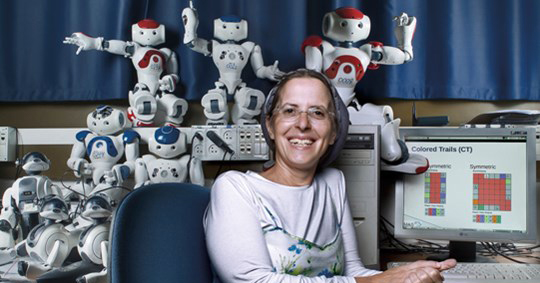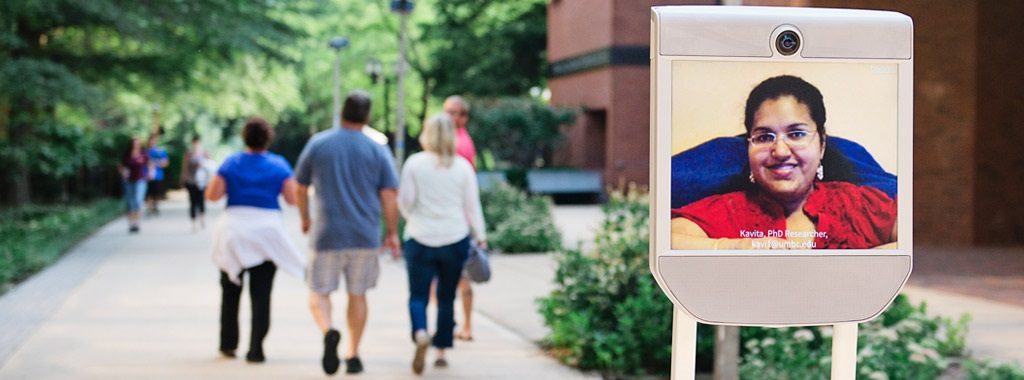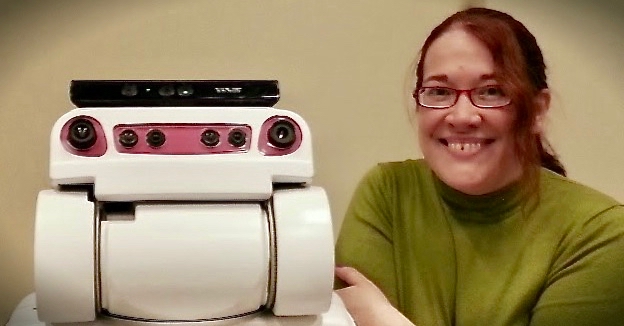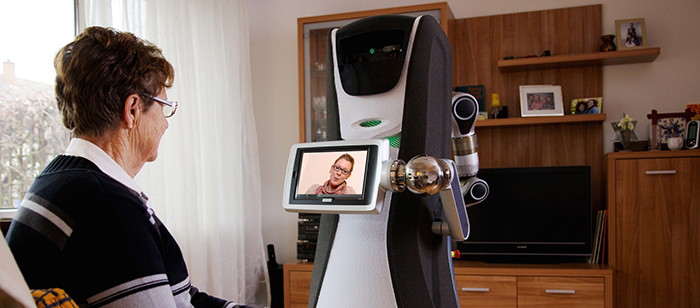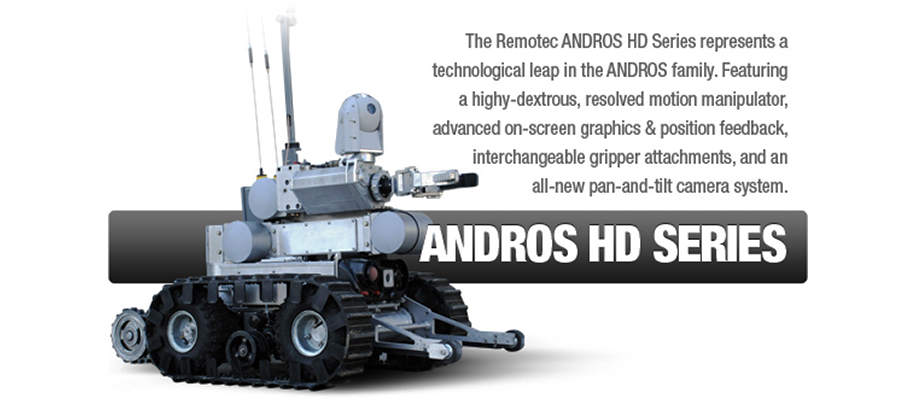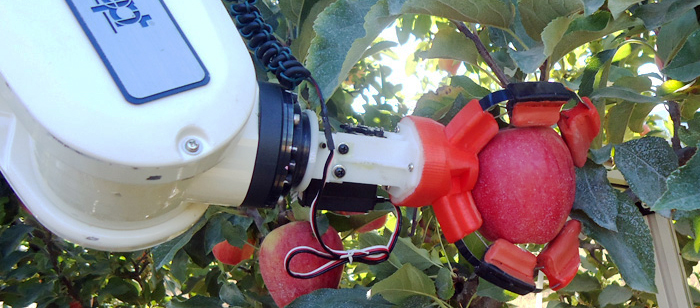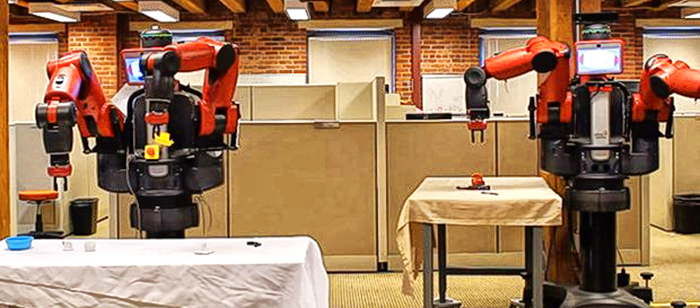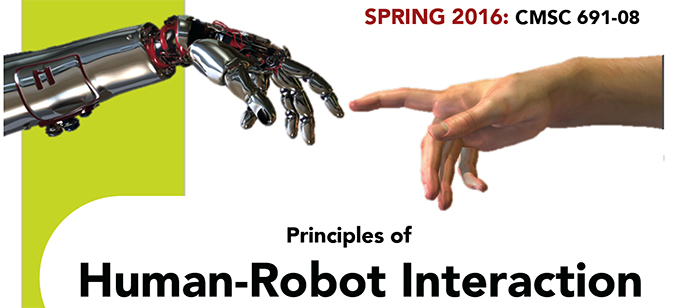
How robots could help bridge the elder-care gap
Cynthia Matuszek, University of Maryland, Baltimore County
Despite innovations that make it easier for seniors to keep living on their own rather than moving into special facilities, most elderly people eventually need a hand with chores and other everyday activities.
Friends and relatives often can’t do all the work. Growing evidence indicates it’s neither sustainable nor healthy for seniors or their loved ones. Yet demand for professional caregivers already far outstrips supply, and experts say this workforce shortage will only get worse.
So how will our society bridge this elder-care gap? In a word, robots.
Just as automation has begun to do jobs previously seen as uniquely suited for humans, like retrieving goods from warehouses, robots will assist your elderly relatives. As a robotics researcher, I believe artificial intelligence has the potential not only to care for our elders but to do so in a way that increases their independence and reduces their social isolation.
Personal robots

In the 2004 movie “I, Robot,” the robot-hating protagonist Del Spooner (played by Will Smith) is shocked to discover a robot in his grandmother’s house, baking a pie. You may have similar mental images: When many people imagine robots in the home, they envision mechanized domestic workers doing tasks in human-like ways.
In reality, many of the robots that will provide support for older adults who “age in place” – staying at home when they might otherwise be forced to relocate to assisted living or nursing homes – won’t look like people.
Instead, they will be specialized systems, akin to the Roomba, iRobot’s robotic vacuum cleaner and the first commercially successful consumer robot. Small, specific devices are not only easier to design and deploy, they allow for incremental adoption as requirements evolve over time.
Seniors, like everyone else, need different things. Many need help with the mechanics of eating, bathing, dressing and standing up – tasks known as “activities of daily living.” Along with daily help with cooking and managing their medications, they can benefit from a robotic hand with more intermittent things such as doing the laundry and getting to the doctor’s office.
That may sound far-fetched, but in addition to vacuuming robots can already mop our floors and mow our lawns. Experimental robots help lift people into and out of chairs and beds, follow recipes, fold towels and dispense pills. Soon, autonomous (self-driving) cars will ferry people to appointments and gatherings.
The kinds of robots already available include models that drive, provide pet-like social companionship and greet customers. Some of these technologies are already in limited trials in nursing homes, and seniors of course can already rely on their own Roombas.

Meanwhile, robot companions may soon help relieve loneliness and nudge forgetful elders to eat on a regular schedule.
Scientists and other inventors are building robots that will do these jobs and many others.
Round-the-clock care
While some tasks remain out of reach of today’s robots, such as inserting IVs or trimming toenails, mechanical caregivers can offer clear advantages over their human counterparts.
The most obvious one is their capacity to work around the clock. Machines, unlike people, are available 24/7. When used in the home, they can support aging in place.
Another plus: Relying on technology to meet day-to-day needs like mopping the floor can improve the quality of time elders spend with family and friends. Delegating mundane chores to robots also leaves more time for seniors to socialize with the people who care about them, and not just for them.
And since using devices isn’t the same as asking someone for help, relying on caregiving robots may lead seniors to perceive less lost autonomy than when they depend on human helpers.
Interacting with robots
This brave new world of robot caregivers won’t take shape unless we make them user-friendly and intuitive, and that means interaction styles matter. In my lab, we work on how robots can interact with people by talking with them. Fortunately, recent research by the Pew Research Center shows that older adults are embracing technology more and more, just like everyone else.
Now that we are beginning to see robots that can competently perform some tasks, researchers like Jenay Beer, an assistant professor of computer science and engineering at the University of South Carolina, are trying to figure out which activities seniors need the most help with and what kinds of robots they might be most willing to use in the near term.
To that end, researchers are asking questions like:
- Do robots need to understand and convey emotion to be accepted?
- How can robots provide social support?
- Is it best when machines simulate eye contact with us?
- Does it help if they can converse?
But the fact is we don’t need all the answers before robots begin to help elders age in place.
Looking ahead
After all, there’s no time to lose.
The Census Bureau estimated that 15 percent of Americans – nearly one in six of us – were aged 65 or older in 2016, up from 12 percent in 2000. Demographers anticipate that by 2060 almost one in four will be in that age group. That means there will be some 48 million more elderly people in the U.S. than there are now.
I believe robots will perform many elder-care tasks within a decade. Some activities will still require human caregivers, and there are people for whom robotic assistance will never be the answer. But you can bet that robots will help seniors age in place, even if they won’t look like butlers or pastry chefs.
Cynthia Matuszek, Assistant Professor of Computer Science and Electrical Engineering, UMBC, University of Maryland, Baltimore County
This article was originally published on The Conversation. Read the original article.
